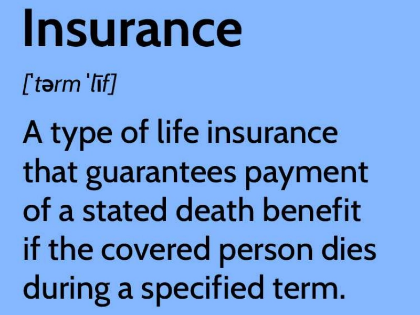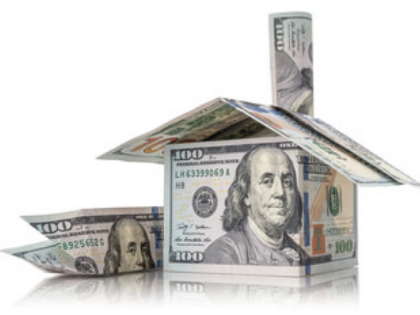Comprehending Auto Loan Terminologies
Understanding the details of an auto loan or buying at a dealership can significantly impact the amount you pay. Interest rates, the length of the loan, and monthly payments are a few important elements. Lenders charge interest rates, which are stated as a percentage, for loans. APRs, or annual percentage rates, are another name for them.
Rates of interest

APR
 It's critical to comprehend the distinction between interest rates and the annual percentage rate (APR) when looking for the finest auto financing options. Because the APR includes prepayment finance charges and other fees in addition to the interest charged on the loan principle, it provides a more complete picture of the overall expenses of borrowing than an interest rate. Federal Truth in Lending standards mandate APR, which facilitates more accurate comparison shopping between loan packages.
APRs are determined by a variety of factors, such as the length of the loan term, the down payment amount, and the borrower's credit score (any score above 660 is regarded as acceptable). You can find a competitive APR by selecting the appropriate mix of these elements. Lower APRs are typically the consequence of shorter loan periods and higher credit scores. By making larger monthly payments than the required minimum or by including a co-borrower with a solid credit history who can ensure payments, you can further lower your annual percentage rate.
It's critical to comprehend the distinction between interest rates and the annual percentage rate (APR) when looking for the finest auto financing options. Because the APR includes prepayment finance charges and other fees in addition to the interest charged on the loan principle, it provides a more complete picture of the overall expenses of borrowing than an interest rate. Federal Truth in Lending standards mandate APR, which facilitates more accurate comparison shopping between loan packages.
APRs are determined by a variety of factors, such as the length of the loan term, the down payment amount, and the borrower's credit score (any score above 660 is regarded as acceptable). You can find a competitive APR by selecting the appropriate mix of these elements. Lower APRs are typically the consequence of shorter loan periods and higher credit scores. By making larger monthly payments than the required minimum or by including a co-borrower with a solid credit history who can ensure payments, you can further lower your annual percentage rate.
Initial Payment
 Your required loan amount is decreased when you make a down payment. It may come from savings on cash, the trade-in value of a car, or rebates for which you are eligible. A down payment may help you get a better rate on an auto loan by demonstrating to lenders that you are a lower-risk borrower.
Before you are legally bound by the terms of the loan, lenders are required by the federal Truth in Lending Act (TILA) to provide you with precise disclosures regarding crucial terms. The APR, which includes interest and fees, is one of these disclosures. When looking for a vehicle loan, compare APRs to be sure you're getting the best offer.
Although longer loan periods result in lower monthly payments, they also raise the possibility that you may own less equity in your car when it is paid off. In the event that this occurs, you might have to trade the car in or sell it, which would cost money.
Your required loan amount is decreased when you make a down payment. It may come from savings on cash, the trade-in value of a car, or rebates for which you are eligible. A down payment may help you get a better rate on an auto loan by demonstrating to lenders that you are a lower-risk borrower.
Before you are legally bound by the terms of the loan, lenders are required by the federal Truth in Lending Act (TILA) to provide you with precise disclosures regarding crucial terms. The APR, which includes interest and fees, is one of these disclosures. When looking for a vehicle loan, compare APRs to be sure you're getting the best offer.
Although longer loan periods result in lower monthly payments, they also raise the possibility that you may own less equity in your car when it is paid off. In the event that this occurs, you might have to trade the car in or sell it, which would cost money.
Duration of the Loan
 The terms of your loan, which include the duration, monthly payments, and other stipulations, will determine how you buy a car. Experian research indicates that while a longer auto loan term may result in cheaper monthly payments, the total interest paid on the loan will increase over the course of the vehicle's life.
It's better to choose a short-term plan that provides you with a manageable monthly payment if you have the opportunity. In this manner, you'll save money on interest charges and be able to pay off the loan sooner. An excellent method to examine how various loan terms and interest rates may affect your monthly and total payments is to use an online auto loan calculator. Inquire about further financing alternatives and compare them on your own using the calculators. Recall that the APR is the percentage of all fees, not simply your interest rate. Because of this, it's critical to always consider the APR when comparing loans. The APR frequently provides the most accurate estimate of the actual cost of borrowing.
The terms of your loan, which include the duration, monthly payments, and other stipulations, will determine how you buy a car. Experian research indicates that while a longer auto loan term may result in cheaper monthly payments, the total interest paid on the loan will increase over the course of the vehicle's life.
It's better to choose a short-term plan that provides you with a manageable monthly payment if you have the opportunity. In this manner, you'll save money on interest charges and be able to pay off the loan sooner. An excellent method to examine how various loan terms and interest rates may affect your monthly and total payments is to use an online auto loan calculator. Inquire about further financing alternatives and compare them on your own using the calculators. Recall that the APR is the percentage of all fees, not simply your interest rate. Because of this, it's critical to always consider the APR when comparing loans. The APR frequently provides the most accurate estimate of the actual cost of borrowing.








